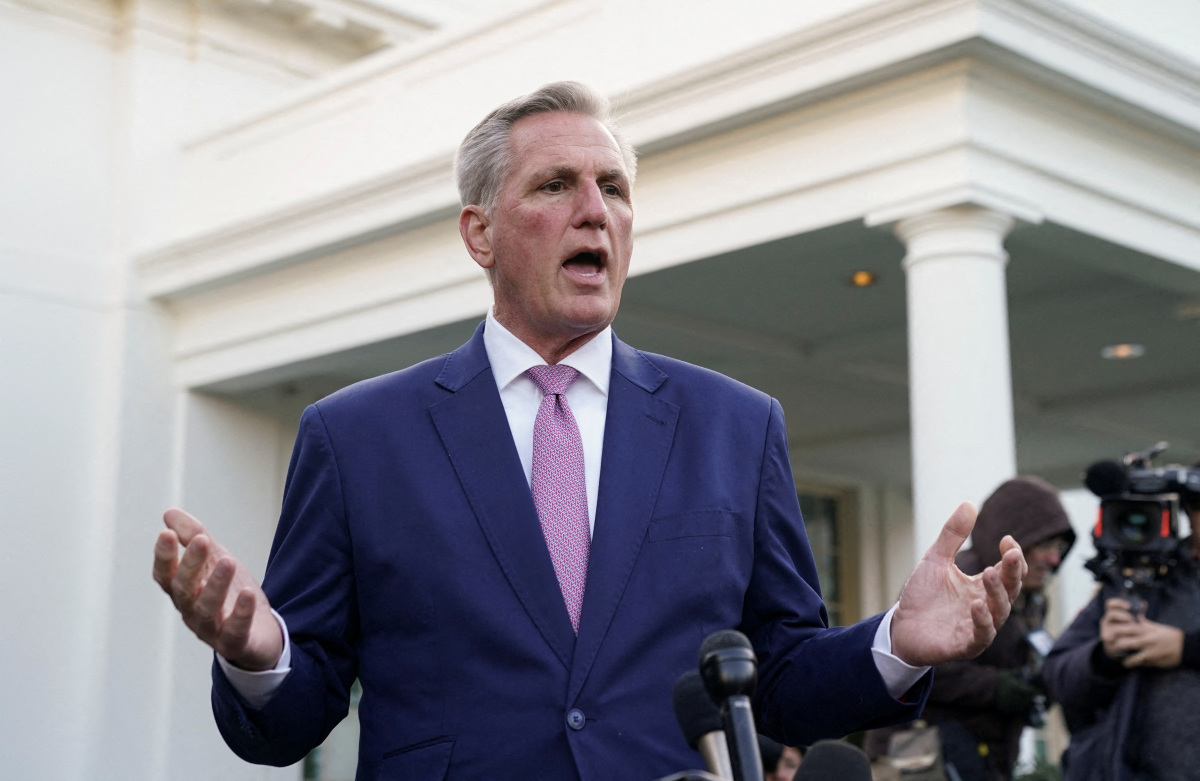Republican Tax Cuts And The National Debt: A Fact-Based Assessment

Table of Contents
Historical Context: Examining Past Republican Tax Cuts and Their Fiscal Outcomes
Examining the historical record allows us to assess the impact of previous Republican tax cuts on the national debt. Analyzing these periods provides valuable insights into the potential consequences of similar policies.
The Reagan Tax Cuts (1981):
The Reagan administration implemented significant tax cuts aimed at stimulating economic growth through supply-side economics.
- National Debt Increase: The national debt nearly tripled during the Reagan years.
- GDP Growth: While GDP growth occurred, it's debated whether the tax cuts were the primary driver.
- Economic Theories: Supply-side economics predicted that lower taxes would incentivize investment and boost economic activity, ultimately increasing government revenue despite lower tax rates. However, critics argue that the resulting deficits negated any positive effects.
The Bush Tax Cuts (2001 & 2003):
These tax cuts, enacted during a period of economic expansion followed by recession and war, led to significant increases in the budget deficit.
- Increased Deficits: The budget deficit expanded substantially after the implementation of these cuts.
- Contributing Factors: The September 11th terrorist attacks and subsequent wars in Afghanistan and Iraq significantly increased government spending, further impacting the national debt.
- Economic Climate: The economic climate was a mix of growth and recession, making it difficult to isolate the impact of tax cuts on the debt.
The Trump Tax Cuts (2017):
The 2017 Tax Cuts and Jobs Act, the largest tax cut in U.S. history, reduced corporate and individual income tax rates.
- Projected vs. Actual Outcomes: While proponents predicted increased economic growth and revenue, the actual increase in the national debt was significant.
- Debates Surrounding Impact: The effectiveness of these cuts remains a subject of intense debate, with economists offering varying perspectives on their impact on economic growth and revenue generation. Many argue the cuts disproportionately benefited corporations and the wealthy.
Economic Theories and Impact Assessment
Understanding the economic theories underpinning Republican tax cuts is crucial to evaluating their impact on the national debt.
Supply-Side Economics and its Predictions:
Supply-side economics, the theoretical basis for many Republican tax cuts, argues that lower taxes stimulate investment and economic growth, ultimately leading to increased tax revenue.
- Core Tenets: Lower taxes incentivize work, saving, and investment.
- Critiques: Critics argue that supply-side effects are often overestimated and that the benefits primarily accrue to the wealthy, exacerbating income inequality.
Laffer Curve and its Relevance:
The Laffer Curve suggests that there's an optimal tax rate that maximizes government revenue. Lowering taxes from excessively high rates can actually increase revenue.
- Graphical Representation: (Include a graph illustrating the Laffer Curve)
- Limitations: The exact location of the optimal tax rate is highly debated, making its practical application difficult.
Keynesian Economics and Counterarguments:
Keynesian economics emphasizes the role of government spending and taxation in managing aggregate demand. It suggests that tax cuts during recessions can stimulate the economy, but during periods of economic expansion, they can worsen the budget deficit.
- Contrasting Views: Keynesian economics advocates for counter-cyclical fiscal policy, suggesting that tax cuts are more effective during recessions.
- Comparison with Observed Outcomes: Comparing Keynesian predictions with the outcomes of Republican tax cuts across different economic cycles helps to evaluate the theory's effectiveness in practice.
Long-Term Implications for the National Debt
The cumulative impact of Republican tax cuts on the national debt raises concerns about its long-term sustainability.
Sustainability of the Current Trajectory:
The current trajectory of the national debt is unsustainable in the long term. Continued large deficits will lead to increased interest payments, crowding out other government spending, and potentially jeopardizing economic stability.
- Long-Term Projections: Cite sources for projections of the national debt's growth over the next decade and beyond.
- Risks Associated with High Debt: Discuss potential risks such as inflation, reduced investor confidence, and higher interest rates.
Potential Solutions and Policy Recommendations:
Addressing the national debt requires a multi-faceted approach encompassing both tax and spending policies.
- Tax Policy Options: Explore options such as progressive tax reforms, closing tax loopholes, and increasing tax rates for high-income earners.
- Spending Policy Options: Consider options such as streamlining government programs, controlling healthcare costs, and investing in infrastructure. A balanced approach is crucial.
Conclusion: Evaluating the Relationship Between Republican Tax Cuts and the National Debt
This analysis demonstrates a correlation between Republican tax cuts and increases in the national debt, though the causal relationship is complex and subject to ongoing debate. While supply-side economics suggests that tax cuts can stimulate economic growth and increase revenue, the historical evidence indicates that this effect hasn't consistently offset the reduction in government revenue. The long-term implications of a continuously growing national debt are significant, demanding careful consideration of both tax and spending policies. We urge readers to engage further with the topic of Republican tax cuts and the national debt, conducting independent research, participating in informed discussions, and advocating for policies that promote fiscal responsibility and long-term economic stability. Understanding the complexities of Republican tax cuts and their impact on the national debt is crucial for responsible civic engagement and the future of the American economy.

Featured Posts
-
 Abn Amro Investeert In Transferz Innovatie In Digitaal Bankieren
May 21, 2025
Abn Amro Investeert In Transferz Innovatie In Digitaal Bankieren
May 21, 2025 -
 Recent Murders Highlight Urgent Need To Combat Femicide In Latin America Colombian Model And Mexican Influencer Cases
May 21, 2025
Recent Murders Highlight Urgent Need To Combat Femicide In Latin America Colombian Model And Mexican Influencer Cases
May 21, 2025 -
 Saskatchewan Political Panel Examining Western Separation
May 21, 2025
Saskatchewan Political Panel Examining Western Separation
May 21, 2025 -
 Project Finance Secured Freepoint Eco Systems And Ing Collaboration
May 21, 2025
Project Finance Secured Freepoint Eco Systems And Ing Collaboration
May 21, 2025 -
 Aimscaps Wild Ride Dominating The World Trading Tournament Wtt
May 21, 2025
Aimscaps Wild Ride Dominating The World Trading Tournament Wtt
May 21, 2025
Latest Posts
-
 Goretzkas Nations League Call Up Nagelsmanns Germany Squad Announcement 03 13 2025
May 21, 2025
Goretzkas Nations League Call Up Nagelsmanns Germany Squad Announcement 03 13 2025
May 21, 2025 -
 Can Germany Overcome Italy In The Quarterfinals
May 21, 2025
Can Germany Overcome Italy In The Quarterfinals
May 21, 2025 -
 Euro 2024 Germanys Quarterfinal Clash Against Italy
May 21, 2025
Euro 2024 Germanys Quarterfinal Clash Against Italy
May 21, 2025 -
 Germany Determined To Beat Italy In Euro Quarterfinals
May 21, 2025
Germany Determined To Beat Italy In Euro Quarterfinals
May 21, 2025 -
 Bangladeshinfo Com Exploring Bangladesh Through Detailed Information
May 21, 2025
Bangladeshinfo Com Exploring Bangladesh Through Detailed Information
May 21, 2025
